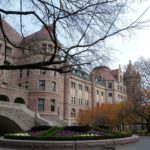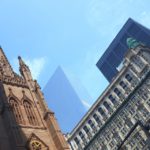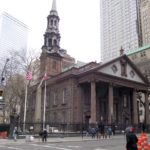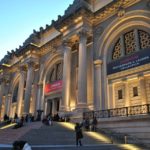One of New York City’s most well-known and important parks, Flushing Meadows – Corona Park’s history goes back decades. One of the city’s premier parks, it offers abundant greenery in Queens and also hosts some of the city’s premier cultural institutions. However, few people truly know the interesting history behind how the park came to be. Here’s a quick look at the hidden history of Flushing Meadows – Corona Park in Queens!
For much of its history, the park was once an open meadow in what is today the Corona and Flushing neighborhoods of Queens. In the 19th century, several roads and rail lines were built in the area, becoming the Northern Boulevard, Long Island Expressway and the Long Island Rail Road of today. In the late 1800s, the area became a waterfront resort for wealthy New Yorkers due to its scenic natural beauty and idyllic location far from the busy streets of Manhattan.
In 1907, the area’s bucolic nature was transformed dramatically when contractor Michael Degnon purchased it and began to transform it into a manufacturing hub, port and industrial dumping ground, all of which outraged local residents. However, plans began as early as the 1920s to transform it into a public park, something akin to Queens’ answer to Manhattan’s Central Park. Spearheaded by the controversial yet powerful Robert Moses, the landfill was transformed into parkland starting in 1930. In 1935, the park – now known as Flushing Meadows Park – was selected as the location of the 1939 World’s Fair, vindicating Moses and local residents who long pushed for new parkland in the area. The park officially opened in 1939 and successfully hosted the 1939 – 1940 World ‘s Fair.
After the fair, plans were made to demolish most structures and transform it into a true public park, though World War II largely interrupted those efforts. It did, however, host the temporary location of the United Nations starting in 1946. In 1959, the park was once again selected to host the World’s Fair, this time for the 1964 – 1965 rendition of it. Renamed Flushing Meadows – Corona Park in 1964 by the New York City Council, the park again successfully hosted the World’s Fair, showcasing iconic landmarks like the Unisphere and the New York State Pavilion, both of which remain to this day. After the fair, the park was turned into a key cultural center for the city, now hosting the Queens Museum, the New York Hall of Science, the Queens Zoo, the Queens Theatre in the Park, the Queens Botanical Garden and the now-demolished Shea Stadium. Later, the USTA National Tennis Center opened in 1978, hosting the U.S. Open ever since. Recently, Flushing Meadows – Corona Park has seen renewed public investment, with the opening of the Flushing Meadows Corona Park Natatorium and Ice Rink in 2008, the opening of Citi Field in 2009 and the expansion of the Queens Museum in 2013.
Since opening back in 1939, Flushing Meadows – Corona Park has been one of the city’s premier cultural and recreational hubs. From hosting World’s Fairs and the first home of the United Nations to simply being a place for New Yorkers to relax and enrich themselves nowadays, the park has seen a colorful and unique history – coming a long way from its origins as a far-flung landfill!






